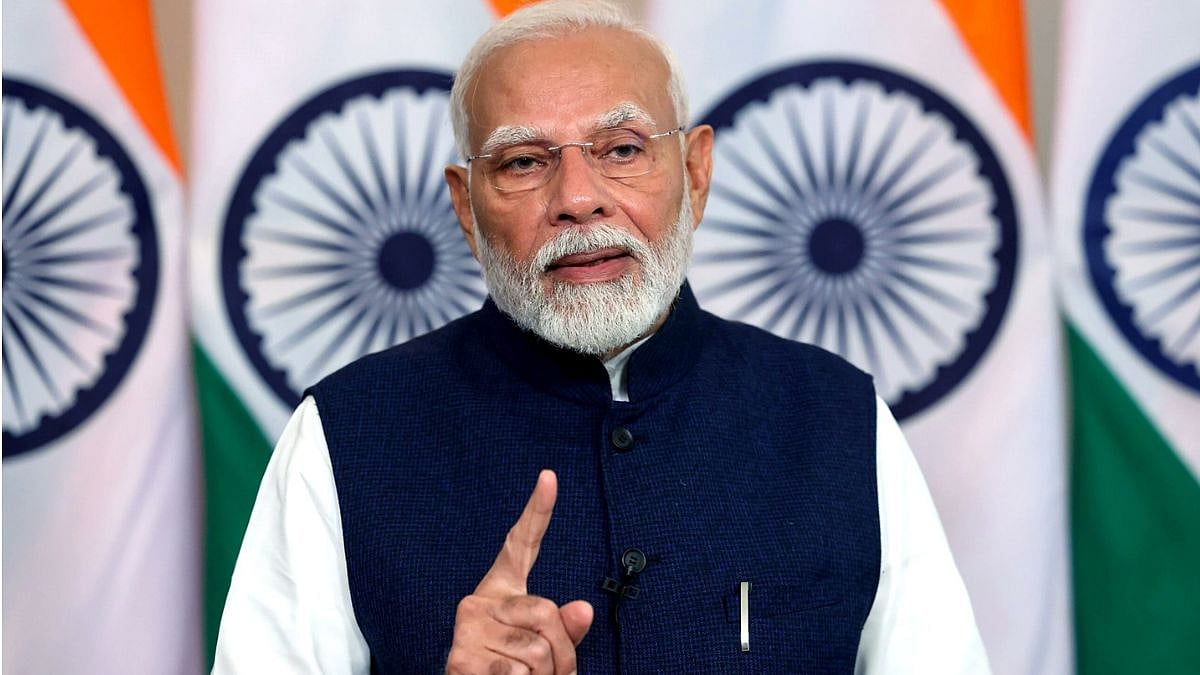Omicron (B.1.1.529), a new SARS-CoV-2 variant, has been designated as a variant of concern (VOC) by the World Health Organisation. Overall, it is the fifth VOC and the first since the Delta (B.1.617) variant. Omicron was first detected from samples collected in South Africa (November 9) and Botswana (November 11). In the days which followed, South Africa witnessed a steep rise in new Covid cases alongside the detection of the new variant.
Cases of Omicron have since been reported from other countries, including Israel, Hong Kong, the UK, Belgium, Italy, the Czech Republic, Germany and Australia, amongst others. No confirmed case of Omicron has been reported from India, yet.
The variant is a form of the virus, slightly different from the original and has different characteristics. The variants are developed as in the replication of any virus, some changes in the genetic sequence may happen, which are termed as ‘mutations’. Most mutations remain insignificant; however, a few may result in change in properties. Once that happens, it becomes a new variant of the virus.
Variant of concern
In SARS-CoV2, a variant is considered ‘of concern’ if associated with one or more of the following (a) increased transmissibility; (b) increase in ability to cause serious disease or change in clinical presentation and (c) ability to escape/bypass (natural or vaccine) induced immunity or decrease in the effectiveness of available diagnostics and therapeutics.
There is a lot that is unknown and unconfirmed about Omicron. However, what we know is that it has around 50 mutations — the maximum for any SARS-CoV-2 variant so far — including 32 in the spike proteins. Ten of those mutations and deletions are in spike proteins at the N-terminal, furin-cleavage sites and the receptor-binding domains. Some of these mutations independently predict enhanced transmissibility (H655Y, N679K and P681H); increased infectivity (R203K and G204R) and immune escape (deletion at nsp6).
Most circulating strain
In a period of less than two weeks since its first detection, B.1.1.529 became the most circulating variant in a few provinces of South Africa, which indicates higher transmissibility. Mutations in Omicron have been reported in Alpha, Beta, Gamma, and Lambda variants, with proven change in transmissibility, immune escape and virulence. It is in this backdrop that Omicron has been designated as VOC.
However, that is not enough and detailed scientific exploration is needed as it cannot be said that the mutations when reported in combination would have a similar effect or not) when reported standalone. A number of studies on aspects such as the performance of neutralising antibodies produced by currently licensed Covid-19 vaccines and to understand linkage between mutations and symptoms have been initiated.
Omicron is ‘an apparent cocktail of all previous mutations’ and that partly explains the descriptions for this variant with multiple superlatives even by scientists and an exaggerated response by some countries with fear and ‘knee-jerk’ reactions of sudden closure of air travel.
However, with every passing day, as new information is becoming available, the responses are becoming more balanced. Authorities in South Africa have reported that ‘no new or unusual symptoms’ have been reported from people infected with Omicron. Experts agree that the high number of mutations alone is not enough to predict the behaviour of the virus. The Beta (B.1. 351) variant had immune escapability and was detected in around 100 countries, yet it did not become the dominant variant.
Extent of threat
A more transmissible variant would be of some risk for all countries but more so for countries with low vaccine coverage. Immune escape, even if proven, at best would mean some reduced effectiveness but vaccines are likely to continue to work. It will be a few more weeks before we will get a sense of how serious the threat of Omicron is. The combination of transmissibility, clinical outcome and immune escape will determine the level of impact.
India needs to be prepared for all eventualities. The complacency which seems to have settled at different levels needs to be shaken off. The Covid-19 testing and genome sequencing, especially at the international ports of entry, should be strengthened. A cautionary note is that Omicron should not result in hurried policy decisions on reducing Covishield dose intervals or administering boosters, which should continue to be determined by a calm assessment of emerging scientific data and available evidence.
One of the weakest components of India’s pandemic response has been science communication. Indian policymakers need to learn from the past and deal with the current situation with timely and transparent communication and information shared through trusted sources. For citizens, even though the transmission of SARS-CoV-2 is low, it is very important to keep following Covid-appropriate behaviours and specially avoid large gatherings. Adults should get fully vaccinated at earliest.
As long as the virus is circulating in any setting, it has the opportunity to develop mutations and become a VOC. Omicron is another reminder that the world has to be together in the fight against the pandemic. It is worrying that the nations are piling up vaccines, offering booster shots and even allowing vaccine sticks to expire while a large proportion of populations, including health workers in many low- and middle-income countries are waiting for their first shot of a Covid vaccine. India should show the way to the world by accelerating ‘vaccine maitri’. The rich and vaccine manufacturing countries need to share Covid vaccines to stop this pandemic, reduce the possibility of any new variant and mitigate the possible impact. It is possible through vaccine equity and global solidarity.
The writer is India’s leading physician-epidemiologist and an expert on vaccines and public health systems. He tweets at @DrLahariya and his email is c.lahariya@gmail.com










